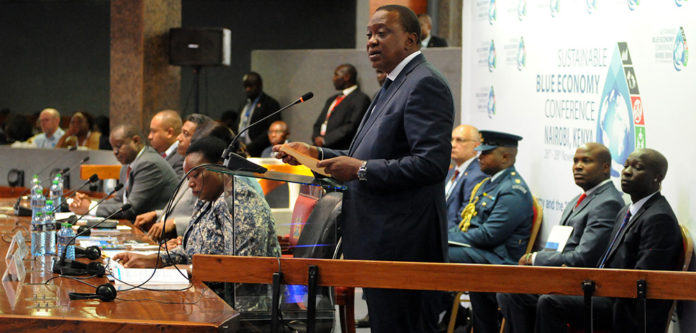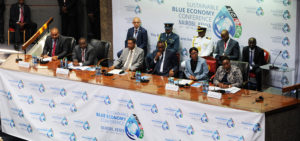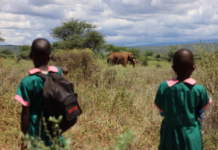By Winnie Kamau
The inaugural conference on Blue Economy kicked off today in Nairobi, Kenya. The Conference has seen over 16,000 delegates drawn from over 170 countries attended the event that has put the Blue Economy and its benefit at the center stage.
Let’s take a quick look at what this Blue Economy and the potential it holds in changing the fortunes of the nations and its people. The Blue Economy is the economic benefit and value we realize from the Earth’s coastal and marine environment.
Sustainable Blue Economy is a marine-based economy that provides social and economic benefits for current and future generations, restores, protects and maintains the diversity, productivity, and resilience of marine ecosystems, and is based on clean technologies, renewable energy, and circular material flows.
In his opening remarks for the conference Host, President Uhuru Kenyatta made 4 pledges that would see policies and mechanisms geared towards harnessing the blue economy. Kenyatta noted “I am deeply concerned about the challenges of sustainable use of this critical resources. The Blue Economy binds us to a common destiny. Oceans are the heart of our planet, they contain 97% of the earth’s water supply nearly half of the oxygen we breathe”.
The inaugural Sustainable Blue Economy conference co-hosted by Kenya, Japan, and Canada presents an excellent opportunity to showcase achievements from to date in advancing Sustainable Blue Economy agenda and to provide concrete examples of how this effort has greatly helped to contribute to the well-being of people, nature, and economy across the world.
Globally, the Blue Economy has an asset base of over USD 24 trillion and generates at least USD 2.5 trillion each year from the combination of fishing and aquaculture, shipping, tourism, and other activities.
Coastal tourism alone is one of the fastest-growing marine-based economic activity worldwide, estimated at GBP 6bn to coral reef nations alone.
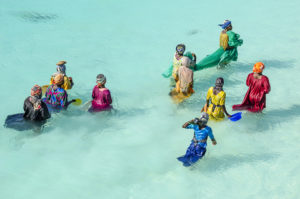 Water bodies such as the oceans, seas, rivers, lakes, marshes, and bays collectively host about 2.2 million plants species, diverse wildlife and other life-forms that represents over 50% of life on earth! These are the resources from where we derive food, medicines, and livelihoods that drive socio-economic development globally.
Water bodies such as the oceans, seas, rivers, lakes, marshes, and bays collectively host about 2.2 million plants species, diverse wildlife and other life-forms that represents over 50% of life on earth! These are the resources from where we derive food, medicines, and livelihoods that drive socio-economic development globally.
The total “ocean asset base” of the Western Indian Ocean region including Comoros, France, Kenya, Madagascar, Mauritius, Mozambique, Seychelles, Somalia, South Africa, and Tanzania) is estimated at USD333.8 billion.
The annual “Gross Marine Product – GMP” of the Western Indian Ocean region equivalent to a country’s annual gross domestic product (GDP) – is at least USD20.8 billion.
Kenya has a share of about 2.4 Billion USD of this Western Indian Ocean economy. With Coastal Tourism taking the largest share of about 1.5 Billion USD annually. Compared to the annual GDP of about 60 Billion USD for the country, this is only a contribution of 4% to the GDP.
Kenya lies in the lucrative tuna belt. It is estimated that Kenya has 150,000 – 300, 000 Metric tonnes of fish in her expansive 200, 000 nautical mile Exclusive Economic Zone (EEZ). More efforts should be directed in investing in sustainable management and development of offshore tuna resources as part of the Kenya Governments’ blue economy agenda.
Threats
The Ocean Economy is projected to double in size between 2010 and 2030. However, the losses in natural capital and associated risks resulting from the unsustainable economic activity are continuing to erode the resource base on which such growth depends.
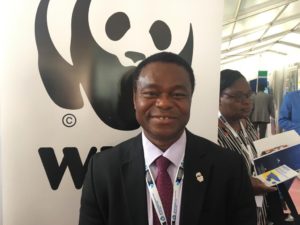
The Regional Director of World Wide Fund for Nature (WWF), Fredrick Kwame noted with concern over the fishing industry “Fisheries and small-scale fisheries, in particular, contribute significantly to economic and food security in Africa. The depletion of fish stocks will, therefore, hit Africa and especially those most vulnerable.”
The percentage of fisheries classified as overfished continues to increase and is now a third of all assessed fisheries worldwide. Almost 60% of assessed fisheries are fished to the limit, and the margins of safety are decreasing as stocks continue to degrade, contributing to poverty, food insecurity, ecosystem imbalances, distorted markets, and unemployment.
The World Bank has estimated that this translates into economic losses of USD 83 billion per year, and yet the global marine harvest could be 13% higher if fisheries were managed more sustainably.
Overfishing, pollution, and runoff, destructive coastal development continue to take their enormous toll and now climate change is causing harm at a scale and pace that even seasoned scientists are struggling to process. This is a major crisis for global biodiversity. It is fast becoming a humanitarian crisis.
“Overfishing and its ecosystem impacts are increasingly becoming an equity and humanitarian issue; global leaders must urgently act together – with a strong sense of urgency – to take the necessary, tangible steps towards an inclusive, sustainable blue economy, in the interest of the people of the region and the environment that supports them,” said Kwame of WWF.
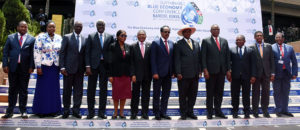 As growing coastal populations lead to an increased demand for fish for food and livelihoods, particularly in less developed countries, the depletion of fish stocks will hit those most vulnerable, especially small-scale fishers whose daily nutrition and livelihoods are already on the line. With overfishing and its ecosystem impacts increasingly becoming a humanitarian issue, global leaders must act urgently to rein in unsustainable fishing to achieve the agreed sustainable development goals.
As growing coastal populations lead to an increased demand for fish for food and livelihoods, particularly in less developed countries, the depletion of fish stocks will hit those most vulnerable, especially small-scale fishers whose daily nutrition and livelihoods are already on the line. With overfishing and its ecosystem impacts increasingly becoming a humanitarian issue, global leaders must act urgently to rein in unsustainable fishing to achieve the agreed sustainable development goals.
Plastic pollution has been detected in all major marine environments worldwide, from shorelines and surface waters down to the deepest parts of the ocean, and poses an increasing threat to marine life and human health. It is estimated that 8 Million tonnes of plastic find their way into the sea annually.
The recent Living Planet Report released by the World Wild Fund for Nature (WWF) depicts how the world has already lost about half of its coral reefs, and the recent IPCC 1.5° report confirms we’re on track to lose up to 90% of what’s left, in the decades ahead.
We know hundreds of millions of people rely on coral reefs for nutrition, livelihoods, protection for storms, cultural sustenance and much else. At the very moment human reliance on coral reefs is growing rapidly in fast-growing regions like East Africa and the Coral Triangle, so the decline of coral reefs is also accelerating.
Mangroves and seagrass beds are crucial carbon stores, and yet the global loss rate of mangroves is 3 to 5 times higher than the one of terrestrial forests. Thereby, the destruction of mangrove forests is responsible for about 10% of global CO2 emissions caused by deforestation – 240 million tons of CO2 per year.

